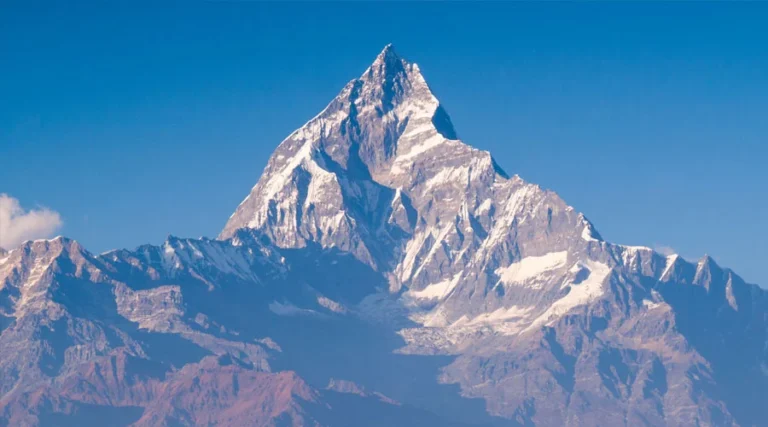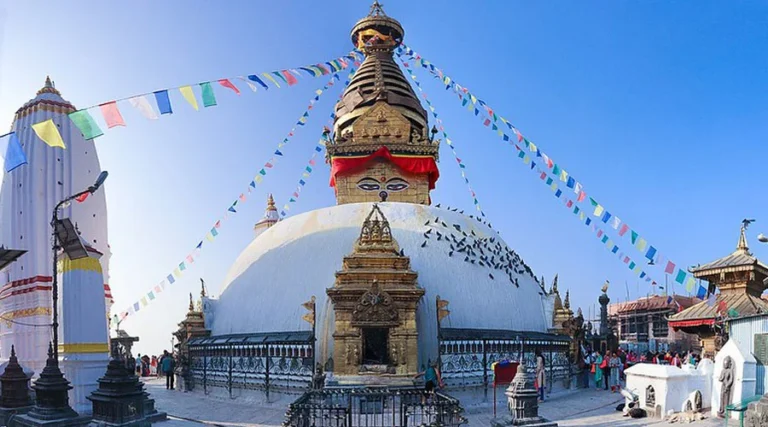
About Trekking to Everest Base Camp: Dreamed of trekking to Everest Base Camp? It’s an iconic journey in the Himalayas of Nepal with breathtaking views and a sense of accomplishment.
Before you start, there are some important things to know:
- Best time to go
- What to pack
- How to stay safe at high altitudes
This article has all the information you need for a successful trek to Everest Base Camp in Nepal.
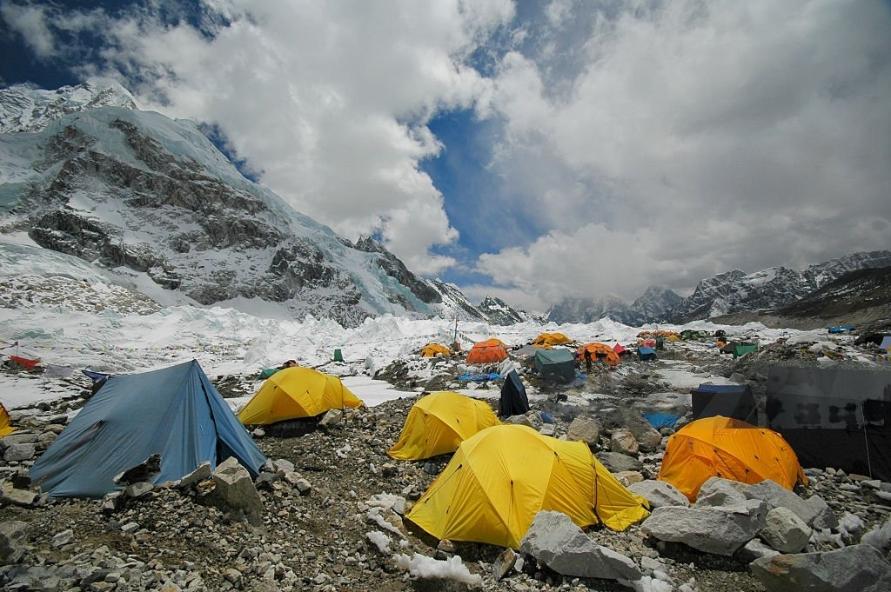

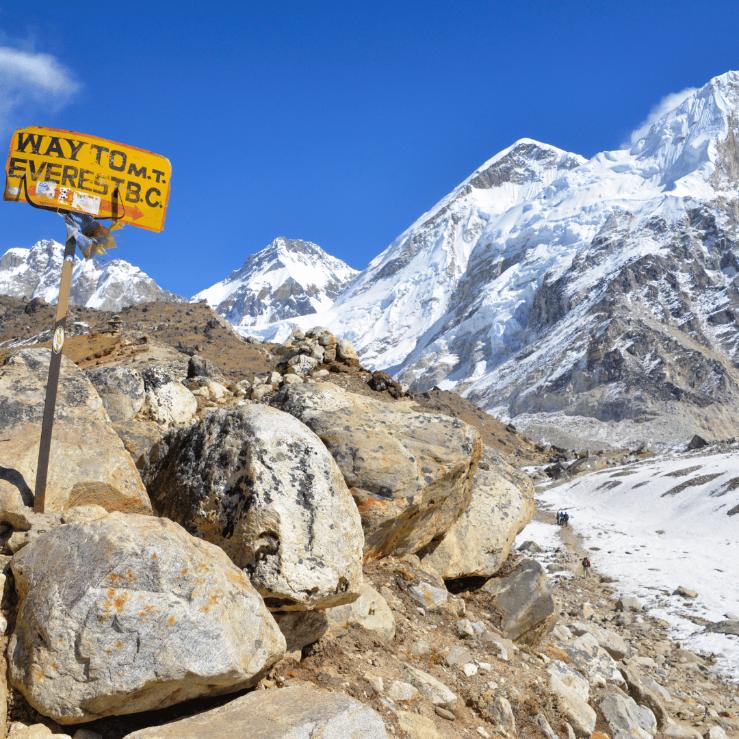
Table of Contents
History About Trekking to Everest Base Camp
The Everest Base Camp trek is historically significant. It’s a popular adventure for trekkers who want to see Mount Everest up close.
Now, we will figure about Trekking to Everest Base Camp’s history on our blog. The history of the Everest Base Camp trek is as rich as the landscapes it traverses. It all began in the early 20th century when intrepid explorers like Sir Edmund Hillary and Tenzing Norgay set their sights on conquering the world’s tallest peak. Since then, the attraction of Everest has drawn adventurers from every corner of the globe.

About trekking to Everest Base Camp route, which goes through amazing Sherpa villages, breathtaking valleys, and rough terrain, has become a pilgrimage for those seeking to test their limits and commune with nature. Today, we proudly carry on this tradition, ensuring that every trekker who joins us experiences the magic of the Himalayas and creates their own piece of Everest history.
The trekking route has evolved over time. Now, trekkers start in Kathmandu and fly to Lukla Airport for a quicker journey. They pass through Namche Bazaar for acclimatization and to experience Sherpa culture up close.
Accommodations vary along the way from teahouses to lodges to now, even luxury hotels to suit different needs. Altitude sickness is a challenge at high elevations, making acclimatization a very crucial phenomenon.
Our guides offer valuable insights and support. Meals include local food and other options to suit the needs of trekkers, and the views of the Himalayas are super stunning. Trekkers need proper gear, insurance, and health precautions for the varying seasons and weather conditions.
Highlights of the Trek to Everest Base Camp
On our blog about trekking to Everest Base Camp, we will share the highlights of the EBC trek in Nepal. The trek to Everest Base Camp is full of amazing highlights and experiences. The journey takes you through the Khumbu region of Nepal, where you will see snow-covered mountains and beautiful landscapes. Trekkers can stay in cozy tea houses or lodges along the trail and experience the hospitality of the Sherpa people. Getting to Everest Base Camp is a huge achievement and standing at the foot of the world’s highest peak is out of the world experience altogether.
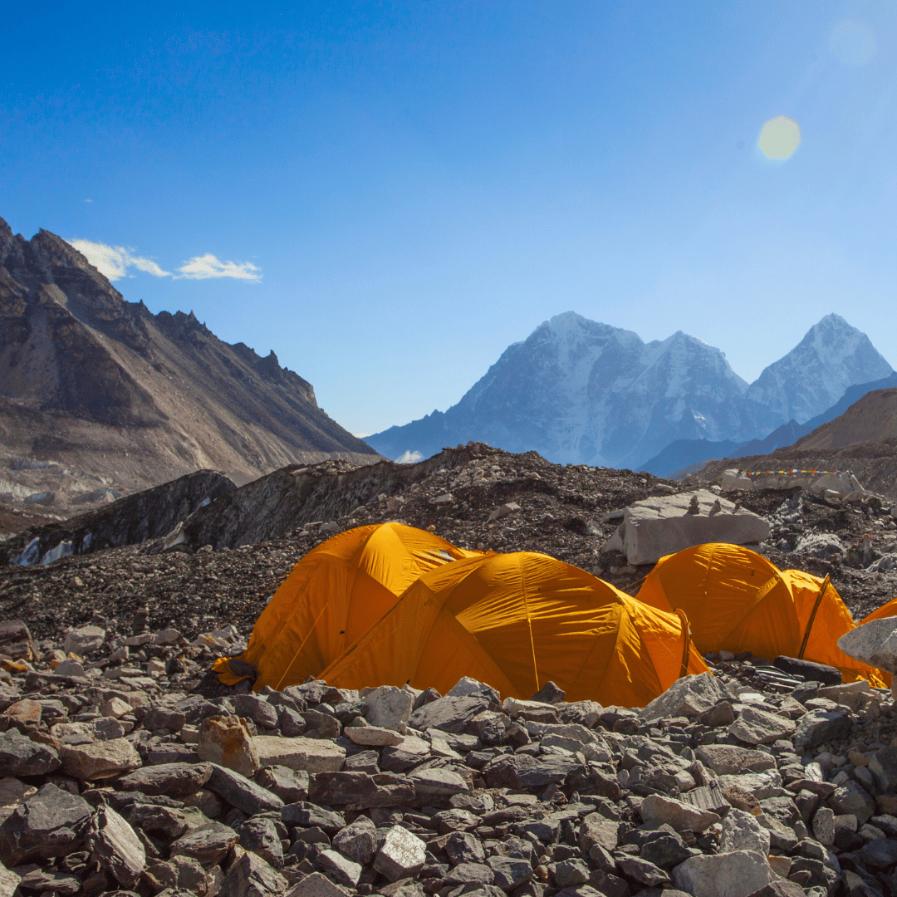
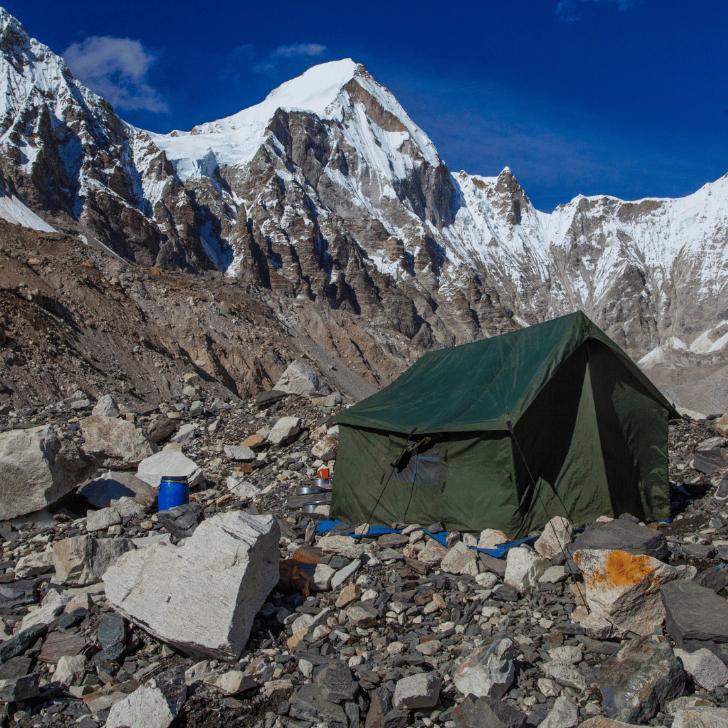
Trekking at high altitudes requires acclimatization to avoid altitude sickness. Our experienced guides and porters support and ensure safety throughout the expedition. From the busy city of Kathmandu to the scenic flights to Lukla airport, each step of the journey brings unique challenges and rewards. The memories of delicious meals, comfy accommodations, and incredible mountain views make this trek an unforgettable adventure for all.
Preparing for Trekking to Everest Base Camp
Fitness and Training for the Trek
On our blog about trekking to Everest Base Camp, we will share the the preparing for trekking to Everest Base Camp. This involves getting your body ready for the adventure ahead. Being fit and well-prepared can make your trekking experience more enjoyable and safer. Before starting the journey, it’s important to focus on building your stamina and endurance. Regular exercise such as walking, hiking, jogging, and cycling can help improve your cardiovascular fitness and strengthen your leg muscles.
Additionally, incorporating strength training exercises like squats, lunges, and core workouts can help you tackle the steep and challenging terrain of the Himalayas. It’s also essential to practice carrying a backpack with weight to simulate the conditions of trekking with your gear. Alongside physical fitness, mental preparation is equally important.
Visualizing yourself successfully completing the trek and staying positive can help you overcome any obstacles you may encounter along the way. Finally, listening to your body and knowing your limits is very important during the trek.
Take breaks when needed, stay hydrated, and listen to your guide’s advice to ensure a safe and memorable journey to Everest Base Camp.
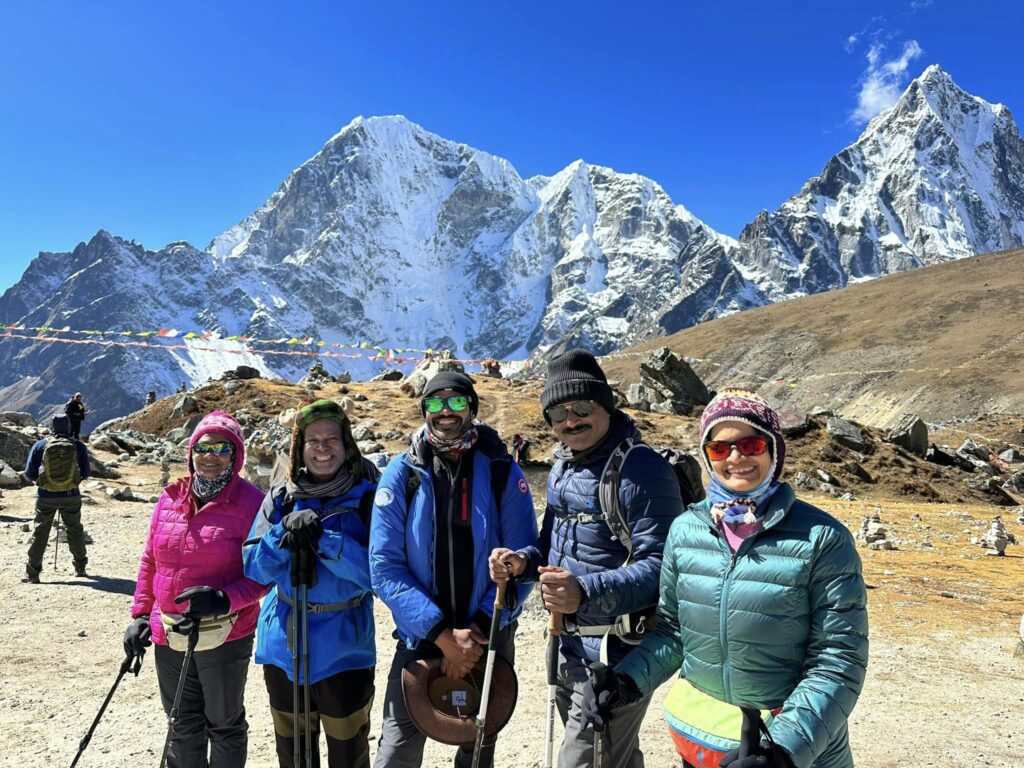
Essential Gear and Packing List
Trekking to Everest Base Camp in Nepal requires the right gear and packing list for a successful experience.
Important items include:
- Warm layers
- Sturdy hiking boots
- Reliable backpack
- Good quality sleeping bag
Don’t forget to pack:
- Sunscreen
- Sunglasses
- Lip balm
- Hat for sun protection at high altitudes
Proper preparation can help combat altitude sickness, a common challenge in higher elevations. Acclimatization is key, so including:
- Water purification tablets
- Energy snacks
- Altitude sickness medication
Hiring a local guide is not only recommended for safe navigation but now has been mandatory by the Government of Nepal from April 2023. Teahouses along the trail offer accommodation and meals. Cash is necessary since ATMs are scarce. Ensure to pack travel insurance for emergencies.
Take time to enjoy the breathtaking views of the Himalayan mountains along the way.
Acclimatization and Altitude Sickness
When talking about trekking to Everest Base Camp, one major thing “The Altitude Sickness” can be a real concern.
Symptoms like headaches, nausea, and fatigue may happen at high altitudes due to lower oxygen levels. To prevent altitude sickness, proper acclimatization is important. It usually takes a few days for the body to adjust to higher altitudes. Trekking at a gradual pace with rest days is necessary.
Along with that proper hydration, proper nutrition, and avoiding alcohol can also aid acclimatization. Warning signs of severe altitude sickness, such as mental confusion, difficulty breathing, or persistent coughing, require immediate descent to lower elevations.
Our trekking guides are knowledgeable about altitude sickness and can help recognize these signs at the earliest.
Staying at tea houses or lodges that offer proper accommodations and meals along the trail can be of great help.
With preparation and acclimatization, the challenge of altitude sickness can be managed during this adventurous expedition in the Himalayan region in Nepal.
Itinerary for Trekking to Everest Base Camp
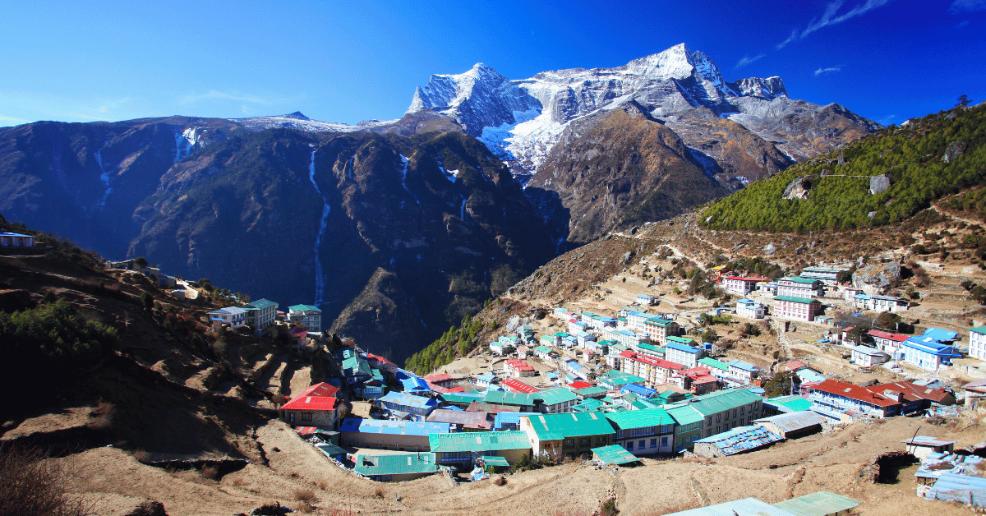
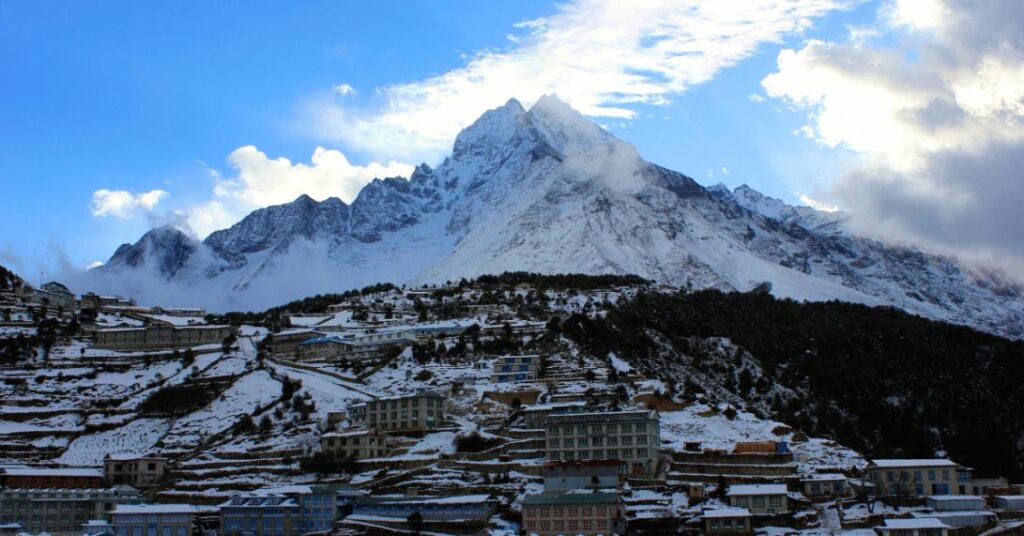
From Lukla to Namche Bazaar
When talking about trekking to Everest Base Camp, the starting of the trek- The trek from Lukla to Namche Bazaar is an important part.
Trekkers begin their journey in Kathmandu and then take a flight to Lukla to start the ascent. The trail poses challenges like steep inclines and changing weather in the Himalayan region.
Along the way, they pass through villages such as Phakding and Monjo, staying in teahouses and lodges. Due to altitude sickness, known as Acute Mountain Sickness (AMS), acclimatization is important.
Trekkers spend time in Namche Bazaar to adjust before heading to EBC. The view of Mount Everest and other mountains is breathtaking.
Proper preparation, like physical conditioning, packing essentials, and getting travel insurance, is vital for a safe and successful trek in the Khumbu region.
Trekking through the Khumbu Valley
Trekking in the Khumbu Valley is a unique adventure in Nepal’s Himalayan region. The journey to Everest Base Camp includes breathtaking views of Mount Everest and other majestic mountains.
To prepare for the trek, focus on acclimatization to higher altitudes. Begin with a flight from Kathmandu to Lukla Airport, the gateway to the Khumbu region.
Local guides and Sherpas will guide you along the challenging trails, ensuring safety, accommodations, and meals in tea houses or lodges. Altitude sickness can be a challenge, so gradual ascent and stays in Namche Bazaar for acclimatization are necessary.
Have adequate insurance, proper gear for various weather conditions, and a healthy meal plan.
The Khumbu Valley trek offers a once-in-a-lifetime experience with scenic beauty and physical challenges.
Reaching Everest Base Camp
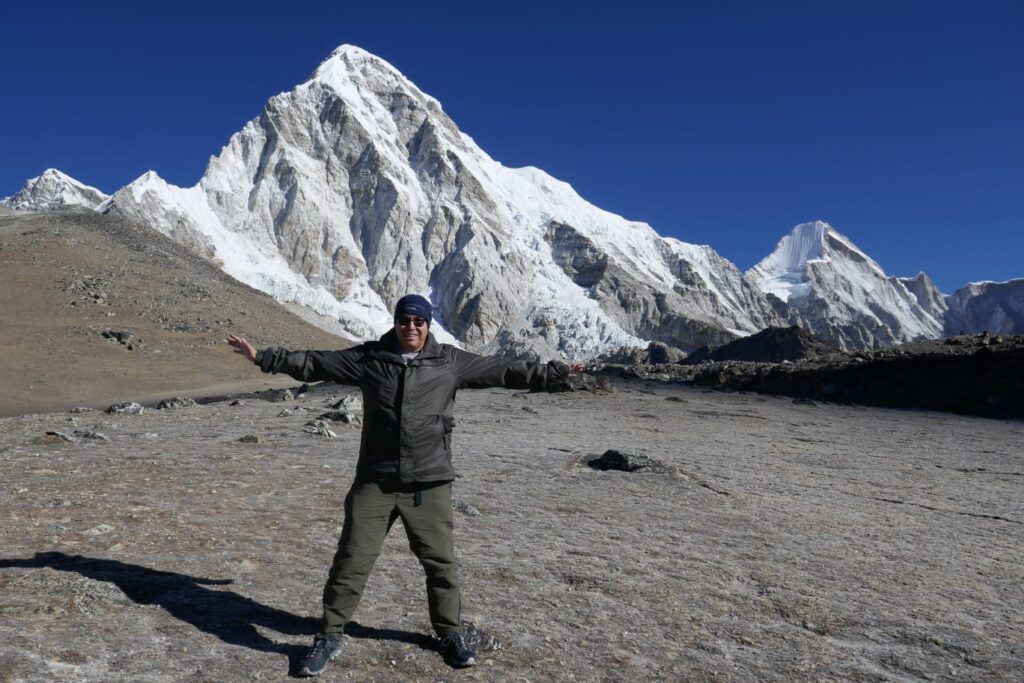
Trekking to Everest Base Camp comes with challenges, like high altitude. Altitude sickness, or AMS, is a serious risk due to the elevation. Proper acclimatization is important to avoid this issue.
Physical and mental prep is necessary before starting the trek. Understanding the tough journey and being in good health are crucial.
For a successful trek, get the required permits, arrange flights to Lukla/Kathmandu, have the right insurance, and ensure proper gear. Logistics such as accommodations, guides, and knowledge of the trail are vital.
Consider the weather in the Himalayas, especially in winter, for a safe experience at Everest Base Camp.
Returning Journey and Flight from Lukla
Completing the Everest Base Camp trek is a marvelous achievement.
The flight back to Kathmandu is thrilling as it navigates through the Himalayan mountains, offering breathtaking views for the final time while returning back. All the memories will flash back and a sense of achievement will be at its peak.
Accommodation and Costs on the EBC Trek
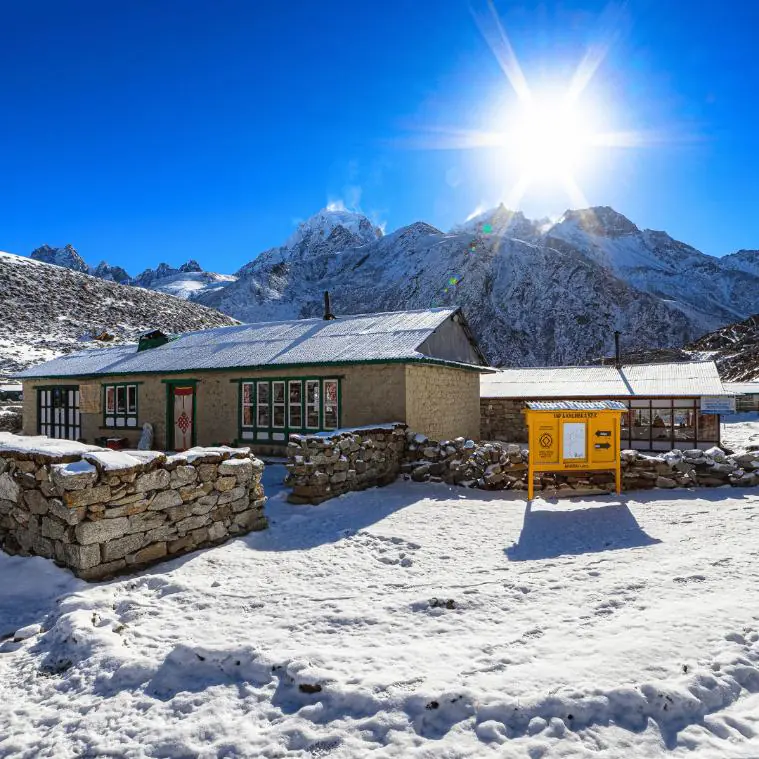
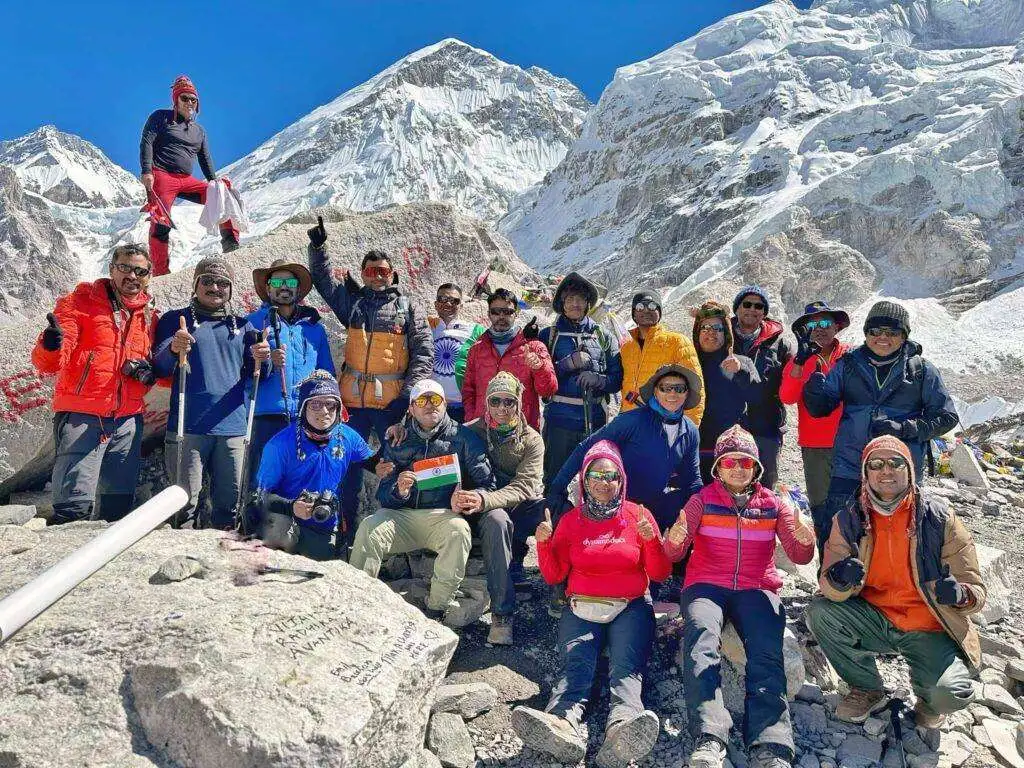
Teahouses and Lodges Along the Trail
When talking about trekking to Everest Base Camp, accommodation there can be a question in mind for many trek enthusiasts. Accommodation options along the trail to Everest Base Camp include teahouses and lodges, offering a variety of choices for trekkers.
- Teahouses are small, cozy lodgings with shared rooms and communal dining areas.
- Lodges provide more comfort with private rooms and attached bathrooms, but at a higher cost.
Prices for staying at teahouses and lodges are budget-friendly compared to upscale hotels in Kathmandu or other urban areas.
Both teahouses and lodges offer meals from local Nepali dishes to international cuisine, crucial for refueling after a long trek.
Services like hot showers, Wi-Fi, and charging stations are available for a comfortable stay.
Our experienced guides and porters, along with acclimatization breaks in Namche Bazaar, contribute to a pleasant and safe trekking experience amidst the stunning Himalayan landscape.
Cost Breakdown for Accommodations and Meals
Travelers heading on the Everest Base Camp trek should budget for accommodations and meals along the journey. Staying in teahouses and lodges in the Khumbu region of Nepal is part of the experience.
When talking about trekking to Everest Base Camp costs for these accommodations, it can range from $5 to $15 per night (in basic teahouses) offering basic amenities like a bed and warm meals necessary for energy and health during the trek.
Guides and porters assist trekkers in navigating the challenging trail, especially at higher altitudes where altitude sickness can be a risk. Acclimatization stops in Namche Bazaar and other villages help adjust to the elevation.
Proper preparation, including travel insurance for trekking in the Himalayas, is essential, considering challenges like weather conditions, seasonal variations, and physical demands. However, the views of Mount Everest and surrounding peaks make the trek a memorable adventure worth the cost.
Additional Costs such as Permits and Porter Service
Permits are necessary for trekking to Everest Base Camp in Nepal.
Trekkers need two permits:
- Sagarmatha National Park Entry Permit (around 30 USD)
- Khumbu Pasang Lhamu Rural Municipality Entry Permit (approximately 20 USD).
These permits support conservation efforts and help manage visitor numbers.
To make the trek easier, hiring porters is an option available.
Porter service costs vary based on load weight and distance, typically ranging from 15-20 USD per day.
Budgeting for permits and porter service is advised for a smooth and safe trek to Everest Base Camp.
Expectations on Accommodation Quality
Accommodations along the trek to Everest Base Camp can greatly enhance the overall adventure experience. Travelers expect basic amenities like clean rooms, comfortable beds, and hot meals to recharge after trekking. The quality of accommodations significantly impacts enjoyment, especially due to harsh weather and altitude challenges. Proper heating, hygiene, and mountain views are important to trekkers.
When it comes to knowing about trekking to Everest Base Camp, having knowledgeable guides and porters are very essential for safety and acclimatization to prevent altitude sickness. Considering the quality of accommodations is vital for a memorable and manageable trek to Mount Everest.
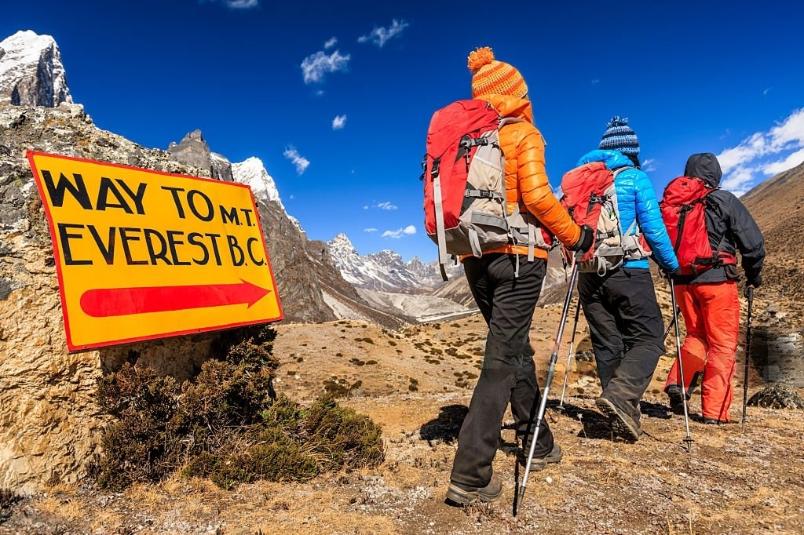
Why Trekking to Everest Base Camp is Great
When it comes to talking about About Trekking to Everest Base Camp in Nepal, it is one of the most exciting adventure with stunning views, cultural experiences, and personal accomplishments.
The trek starts from Kathmandu airport, passes through Lukla, and poses challenges such as altitude sickness from the high elevation. Proper preparation, acclimatization, and guidance from Sherpa guides can help overcome these challenges.
Trekkers stay in cozy tea houses and lodges in places like Namche Bazaar, offering comfortable accommodations in the rugged terrain. The diverse weather, snowy landscapes, and views of Mount Everest in the Khumbu region make the experience inspiring.
Over to you

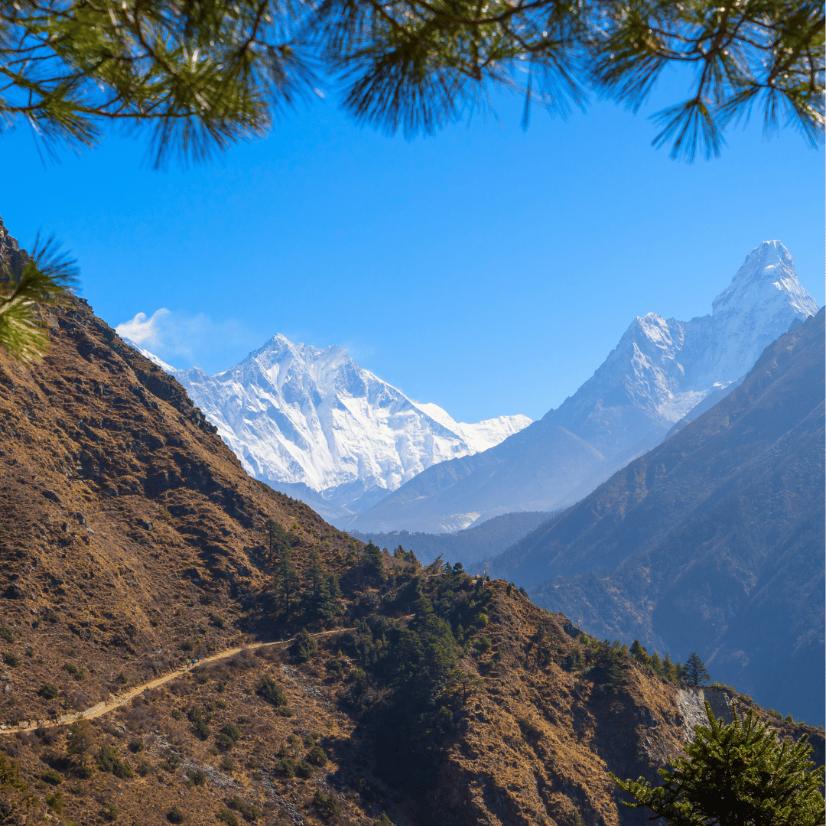
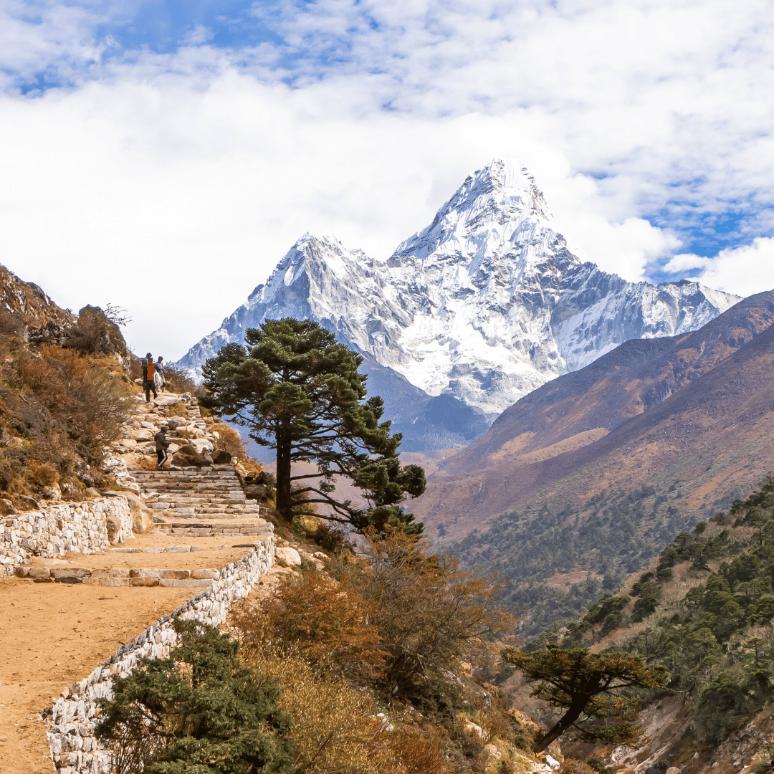
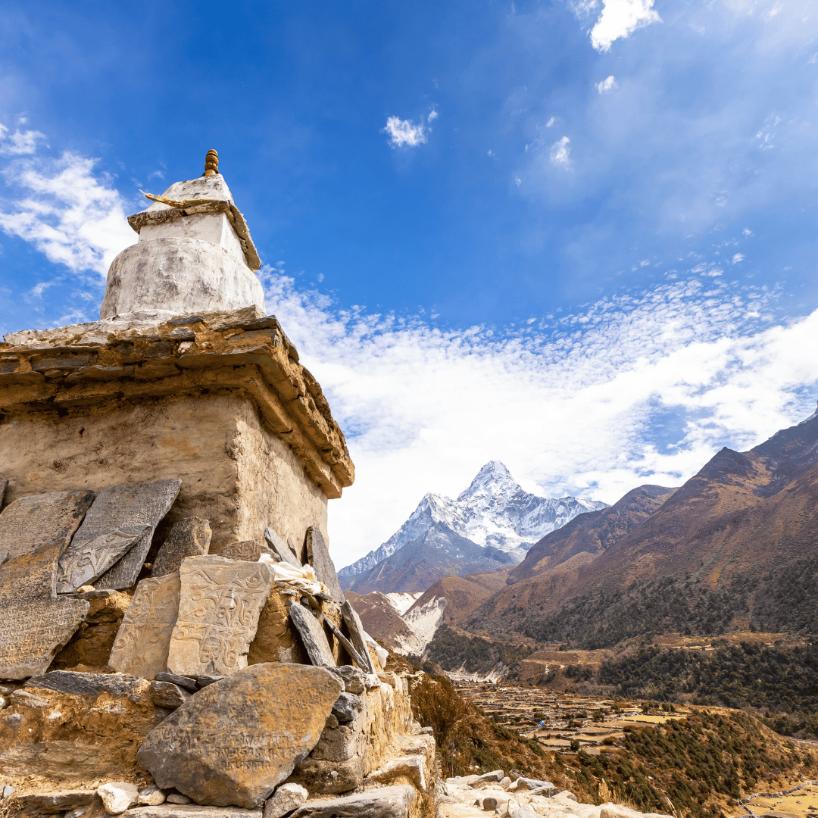
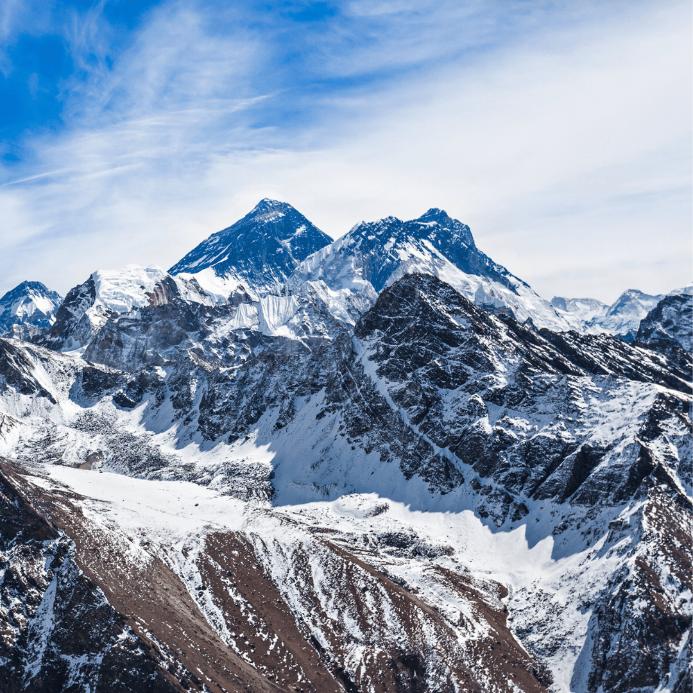
Trekking to Everest Base Camp is a challenging journey through the Himalayas in Nepal. The elevation reaches over 17,000 feet. Proper preparation is key, which includes physical fitness training and getting necessary permits.
The trek usually lasts around 12-16 days (depending upon our packages- and can be accustomed as per the requirement).
Accommodations vary from basic teahouses to luxury lodges. Altitude sickness is a common worry, so acclimatization days and staying hydrated are important.
The best time to trek is during spring (March to May) and fall (September to November) for clearer skies and milder temperatures.
FAQ
You may also like
Send an Enquiry
Error: Contact form not found.
© 2025 - Himalayan Trekking and Tours (P) Ltd. All Rights Reserved.


